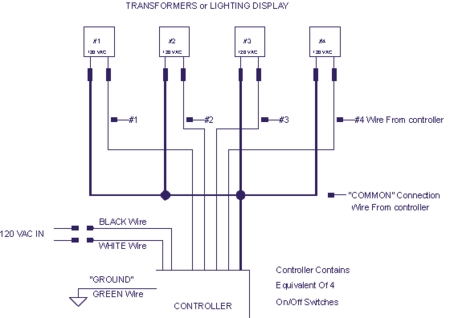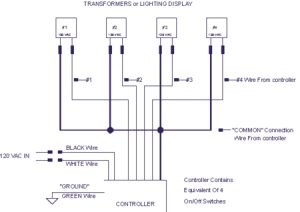Designing and manufacturing signs and displays with animated lighting is one area of the sign business that receives little coverage within the industry, even though it offers an unlimited business opportunity for the creative sign shop. The intent of these series of articles is to de-mystify animated lighting and open the window of opportunity for increasing your sign and display business.
No matter how intricate and complex lighting animation appears to be, it is controlled by nothing more than one or more mechanical or electronic On/Off switches. The orchestration of the On/Off cycles determines the animation effect, and can range from the very complex and expensive to the very simple and affordable. This article will not address these complex systems because of their cost and limited customer base. What we will address is the simpler form of animation that is relatively inexpensive, within the manufacturing capability of virtually every sign shop, and has a large customer base potential.
We’re talking about simple forms of animation such as a waving hand, a flickering fire, a frog jumping into or out of a pond, a bird or butterfly flapping its wings, wheels spinning, moving lights on a movie marquee, a flowing waterfall, one after the other illumination of the letters in a company’s name, and so on. Animation is like creating a cartoon one drawing at a time and then rapidly flipping through the drawings so they appear to move. Lighting animation is created exactly the same way, but rather than flipping drawings, separate forms or shapes of lighting are turned On and Off in such a way that the eye perceives the illusion of motion.
The equipment required to create this simple form of lighting animation is often referred to as a flasher, chaser, controller, sequencer or scripter. We’re going to lump them into one big group and refer to them simply as a "controller." Regardless of their name, they do nothing more than provide On/Off control of the lighting circuit(s) so as to create the desired animation. The following diagram illustrates how a controller is connected to lighting circuits that will be animated.
The first form of controllers were mechanical, and are still in use today for many applications. Mechanical controllers are usually constructed of a motor that drives a cam/switch assembly which opens and closes switch contacts in a fixed sequence at a fixed speed. Changing the animation sequence or speed usually requires adjustment of the cam/switch assembly, or obtaining a new one. Technology advancement led to the creation of the electronic controller which has no moving parts and provides a simple means for changing both the animation sequence and speed. For the remainder of this article, all references to a controller will assume it to be electronic.
The simplest lighting controller is a "flasher" which does nothing more than continually turn On and Off a lighting circuit. By using a slightly more sophisticated controller that is designed to apply this flashing technique to several lighting circuits in sequential order (one after the other), we can create animated "chasing" or "running" lighting so familiarly associated with a movie marquee. Advancing to a still more sophisticated controller that utilizes a stored program containing specific On/Off sequences for each of the lighting circuits it controls, we unleash unbounded versatility in animated lighting signage. This concept forms the basis of the complex animation displays we briefly mentioned earlier; however, the simple animation controller we will be discussing is not a computer. Although, it does contain a memory device to store the desired On/Off lighting sequences. And since this simple controller can control other controllers, creating very elegant animation sequences is a very real and economical possibility.
Advertisement
Controllers are available from a variety of sources, and are advertised regularly in the various sign publications. They are available in low to high current models capable of controlling fluorescent, incandescent and neon lighting in voltage ranges of 12, 24, 120 and 240 VAC, and 12 and 24 VDC.



 Tip Sheet1 week ago
Tip Sheet1 week ago
 Photo Gallery2 days ago
Photo Gallery2 days ago
 Ask Signs of the Times4 days ago
Ask Signs of the Times4 days ago
 Real Deal1 week ago
Real Deal1 week ago
 Benchmarks6 days ago
Benchmarks6 days ago
 Editor's Note2 weeks ago
Editor's Note2 weeks ago
 Women in Signs1 week ago
Women in Signs1 week ago
 Photo Gallery1 week ago
Photo Gallery1 week ago










